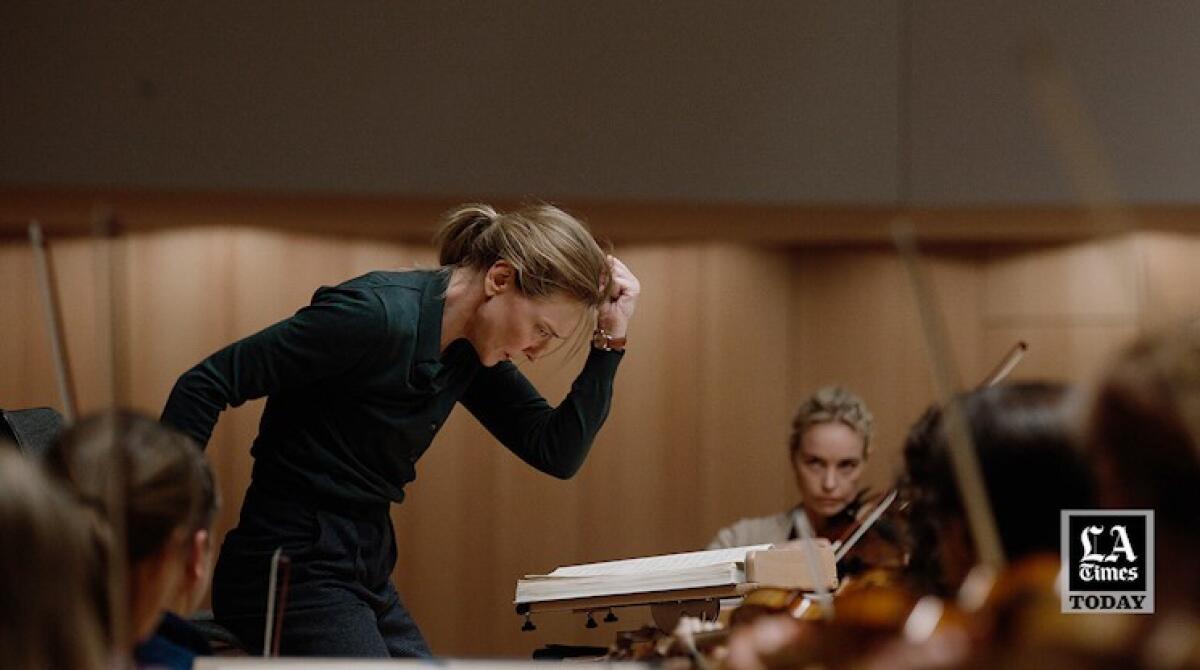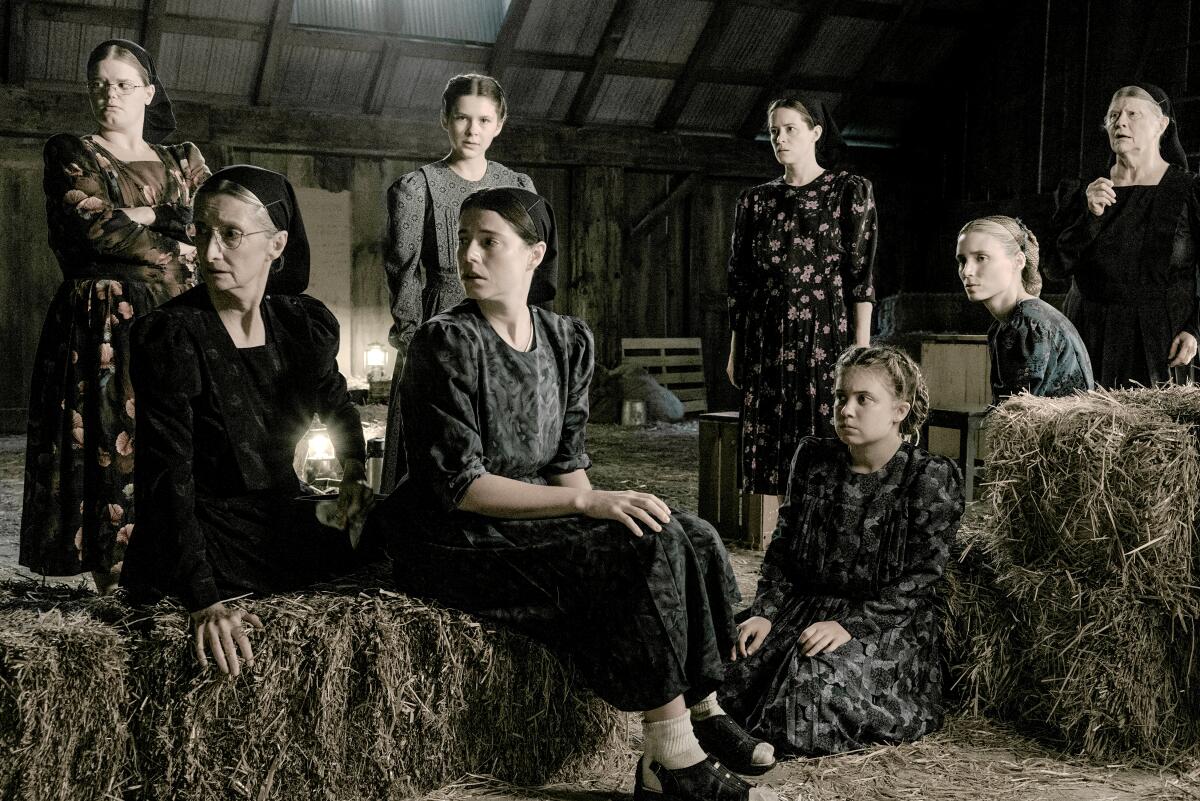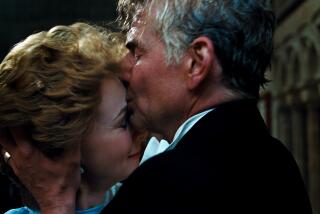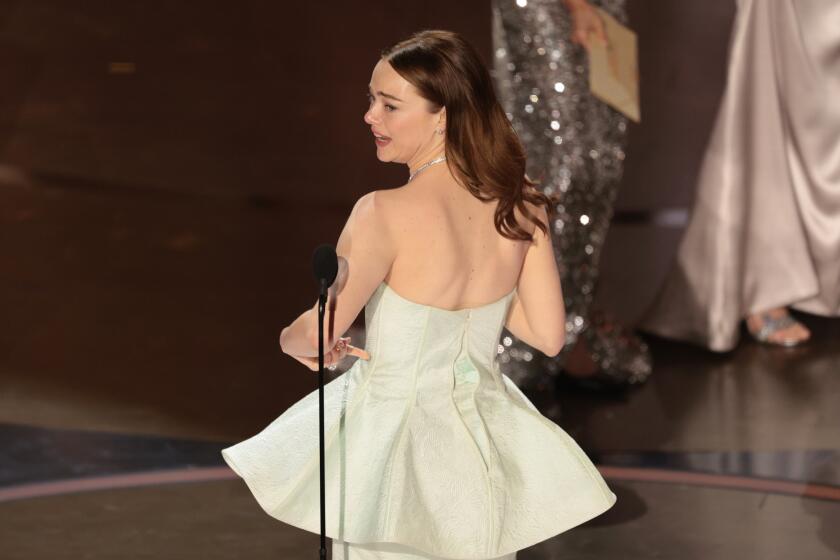In two scores, Hildur Guðnadóttir creates music ‘like a ghost’ and finds hope amid anger

It’s nearly impossible to hear the score in “Tar” — but that’s by design. In a story about an elite classical conductor, who is constantly wielding a symphony orchestra, a traditional score “would just be too cluttered,” says composer Hildur Guðnadóttir — “cream on top of cream.”
Nonetheless, Guðnadóttir played a fortissimo role in the movie. She was the second person director Todd Field hired after star Cate Blanchett, and she worked at his side for a year and a half. (Her name is also dropped in a meta line of dialogue.)
Her first task was composing a piece of music that Blanchett’s character is tinkering with throughout the movie.
“Since this is a film about the process of making music, we never hear the finished version,” Guðnadóttir says. “When you’re writing music, you are hearing it internally — you hear it inside yourself before it starts moving air. I thought it was really important, in order to translate that into the film so they could translate it into the acting and the whole scenario, that we understood what that internal music was.”
The full version of “For Petra” — including the prototype voice memo Guðnadóttir dispatched after reading the script — exists in full on the Deutsche Grammophon soundtrack album, along with music she composed for the actors to help them find their internal tempo. That was all Guðnadóttir’s idea.
“She asked me questions that were really so smart,” says Field. “Like, ‘OK, how does she move? What tempo does she move at?’ So we literally scored the physical action for the characters.”
Cate Blanchett, director Todd Field and composer Hildur Guðnadóttir break down the vital role classical music plays in the critically hailed ‘Tár.’
The actors listened to their “tempo mapping” music on set, and all of this unheard-but-felt music Guðnadóttir wrote before shooting inspired her approach to scoring the film in post-production. In fact, there’s about 40 minutes of score used in Tár — it’s simply subsonic, creating a sense of anxiety or dread that is subliminally felt in sympathy with Lydia Tár, for whom a noose is tightening.

“There’s so much score that I reckon you’re never consciously aware of,” Field says cagily. “There are a couple of places where its absence has an effect, where probably you may not have been aware that there was anything there. But when it leaves, something happens. And that’s mainly late in the film.”
“I shouldn’t really be talking about any of this!” he says, catching himself.
The score is “bringing us into the subconscious realm of the film,” explains Guðnadóttir. “Because there are also a lot of things that happen in the film that are possibly even otherworldly. So the role of the music is to bring us to that kind of uneasy place, of not knowing what’s real, who’s there. The music is almost like a ghost.”
The composer’s other score this year is felt much more keenly — and, in a surprise to her, warmly.
When Guðnadóttir read Sarah Polley’s script for “Women Talking,” she got angry. Based on the 2018 novel by Miriam Toews, the film stars Rooney Mara, Claire Foy and Jessie Buckley as women living in an isolated, patriarchal religious sect marked by systemic rape and physical abuse.

“I was genuinely paralyzed for a few days,” says Guðnadóttir. “There were times where I just couldn’t write any music because I was just so upset on behalf of these women. So the music that I originally started out writing was much darker, and much more heavy-handed.”
But Polley challenged her to write, instead, music of hope.
“It had to make us feel the characters’ relationship to their faith, their sense of what a real world beyond the suffering they have endured might look like,” says Polley. “In short, the score needed to speak to us about the potential in the women’s hearts — not what was in their current lives.”
Sarah Polley, Frances McDormand, Claire Foy, Jessie Buckley and more stars of ‘Women Talking’ reflect on the industry sea change that led to their warmly received festival breakout.
Polley knew Guðnadóttir was the right composer for the task, because “she is incapable of sentimentality. Her music comes from the wisest part of herself.”
Guðnadóttir came up with a folk-like theme that ambles on a country road of guitars and acoustic bass. She chose instruments that suited the rural world of the characters, and played cello with her longtime friend and collaborator, Skúli Sverrisson.
The sessions were “half recording music, and then half of it is just us being friends, and laughing together, and crying together, and going through life with our connection together,” she says, “finding strength in the connection. My way of navigating this was just pouring actual love into the score. We really poured all the love of our friendship into this music. So I hope that can be heard.”
There is also a recurring motif for scenes that obliquely flash back to the abuse, which Guðnadóttir referred to as “doomsday and the call to prayer.” It’s performed by clanging bells and prepared guitars — “so the percussion is also very earthy and folky.”
“Hildur’s original take on the music was magnificent,” says Polley, “and it was also part of her process of excising that grief and anger for what these women went through in order to land in a more expansive world of possibility.”
More to Read
From the Oscars to the Emmys.
Get the Envelope newsletter for exclusive awards season coverage, behind-the-scenes stories from the Envelope podcast and columnist Glenn Whipp’s must-read analysis.
You may occasionally receive promotional content from the Los Angeles Times.








